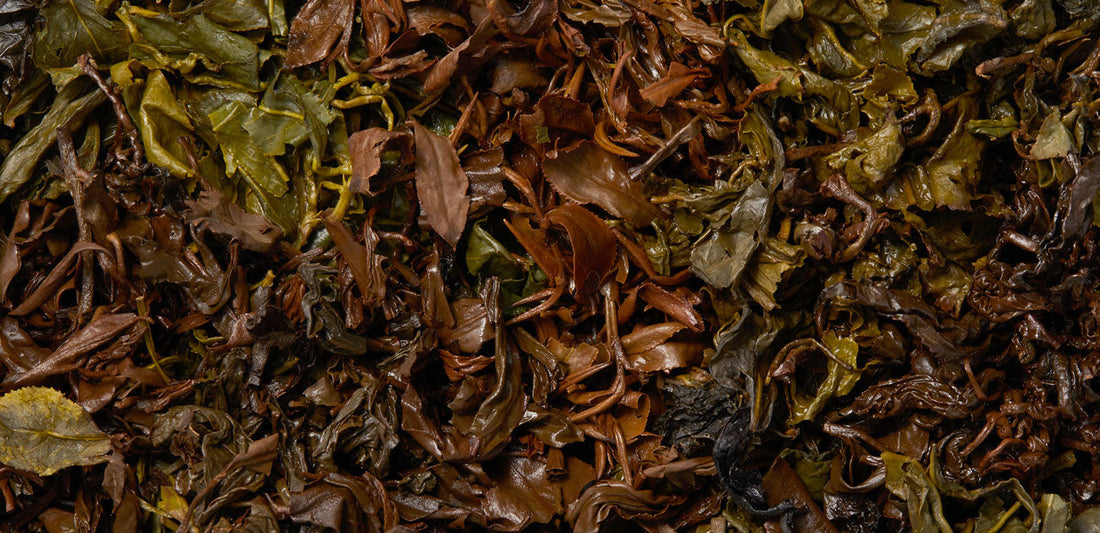
What is Oolong Tea?
Oolong tea is made from the Camellia sinensis plant, the same used for green and black teas. It undergoes partial oxidation, typically in the range of about 10% to 70%. This variable oxidation process imparts Oolong tea with its wide range of flavors. In addition, Oolong teas can also be roasted, which further develops their flavor and aroma. Oolong is mainly produced in China and Taiwan.
What's the Oxidation Level?
Oxidation level (think apple or avocado browning) defines green, oolong, and black teas. Green tea is not oxidized, and black tea is fully oxidized. Oolong tea is semi-oxidized or partially oxidized. Therefore, it covers a large canvas of flavor variations and complexities. The result depends on the production style of the tea maker.
- Lightly oxidized oolongs: Smilar to green tea, more vegetal but with hints of white flowers.
- Heavily oxidized oolongs: Tend to carry richer floral notes with a maltier aroma similar to black teas.
Here is an example of the colors of oolong tea. You can also browse our collection of oolong teas to find all the different shapes and flavors of Oolong Tea.


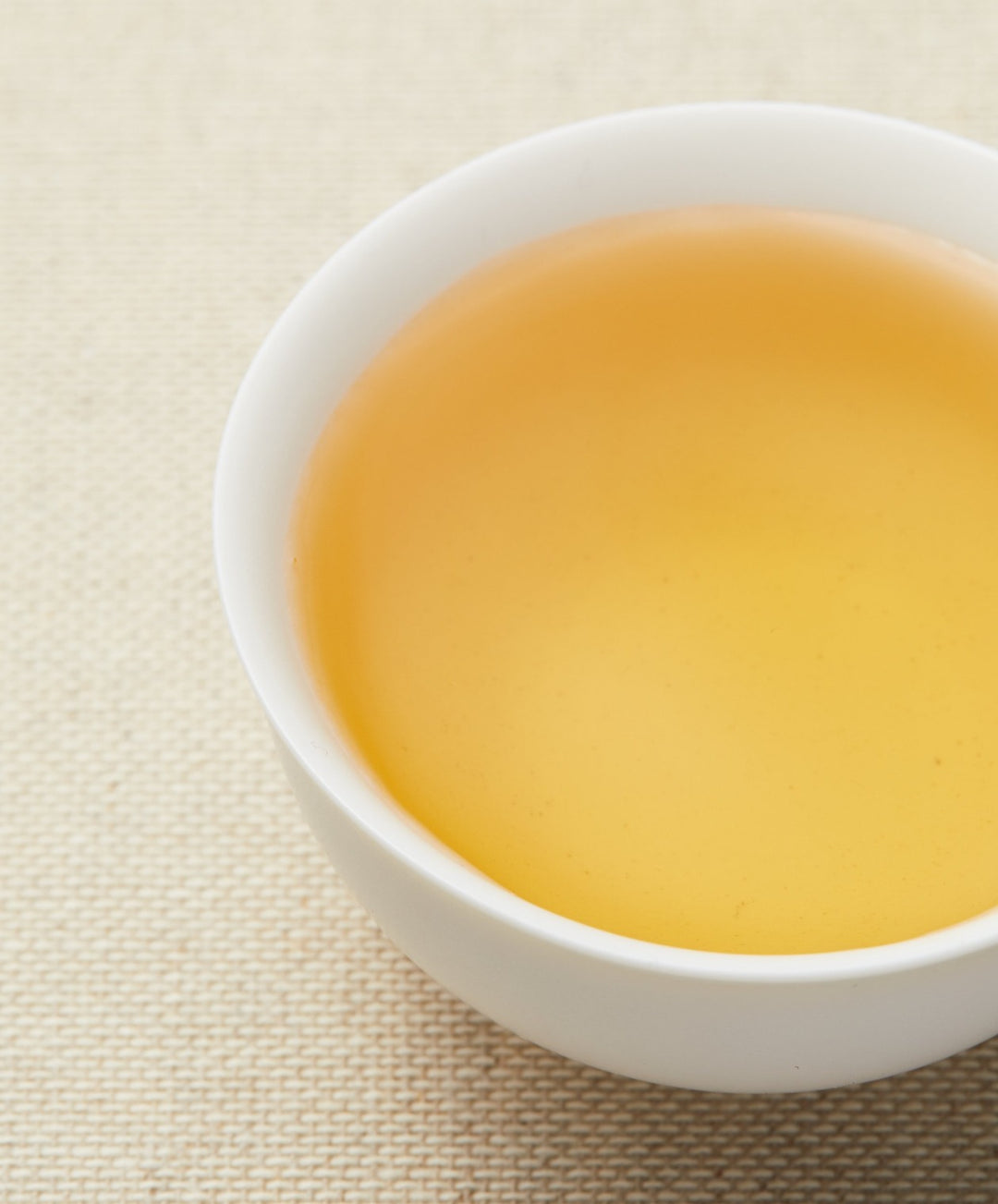
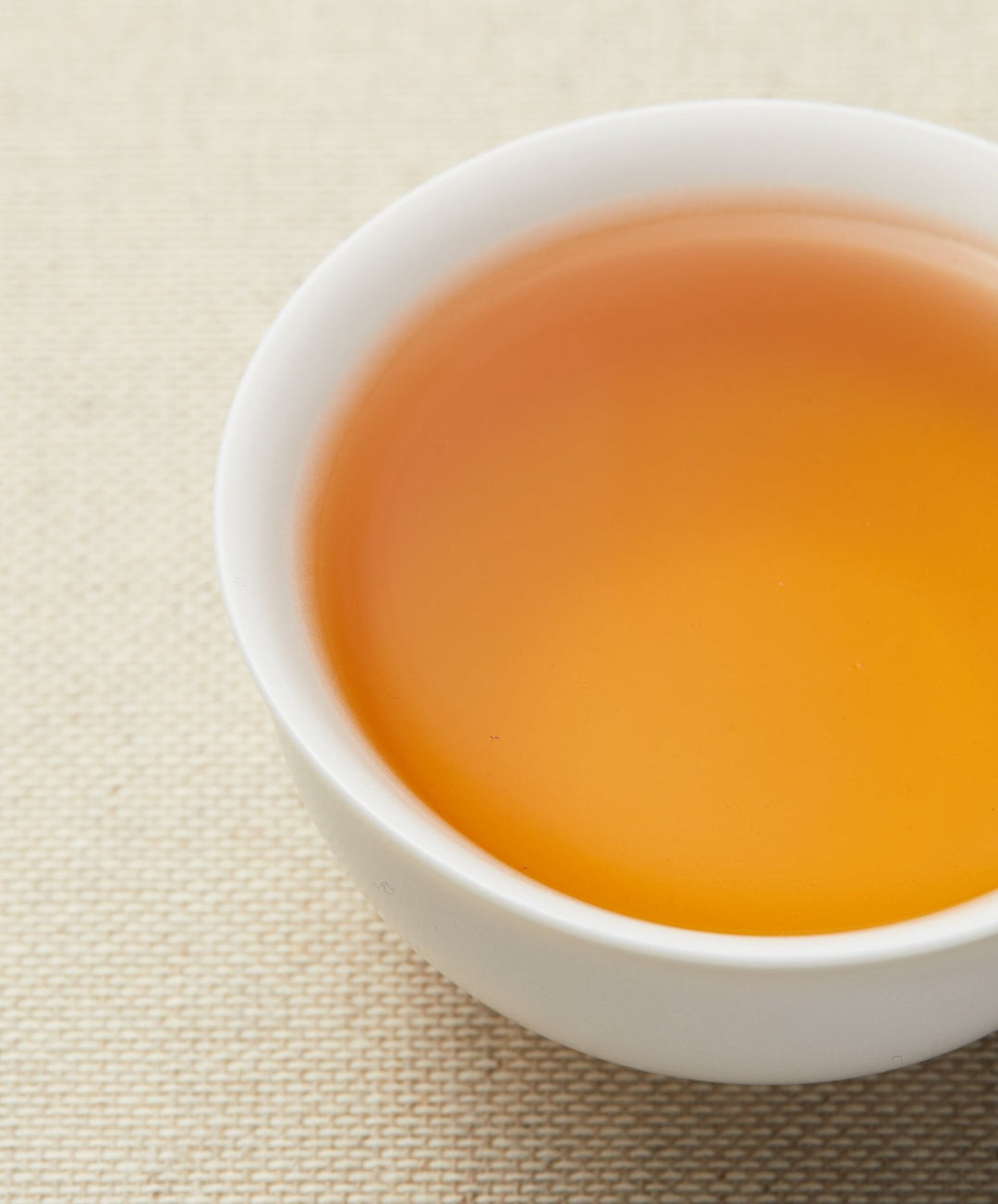

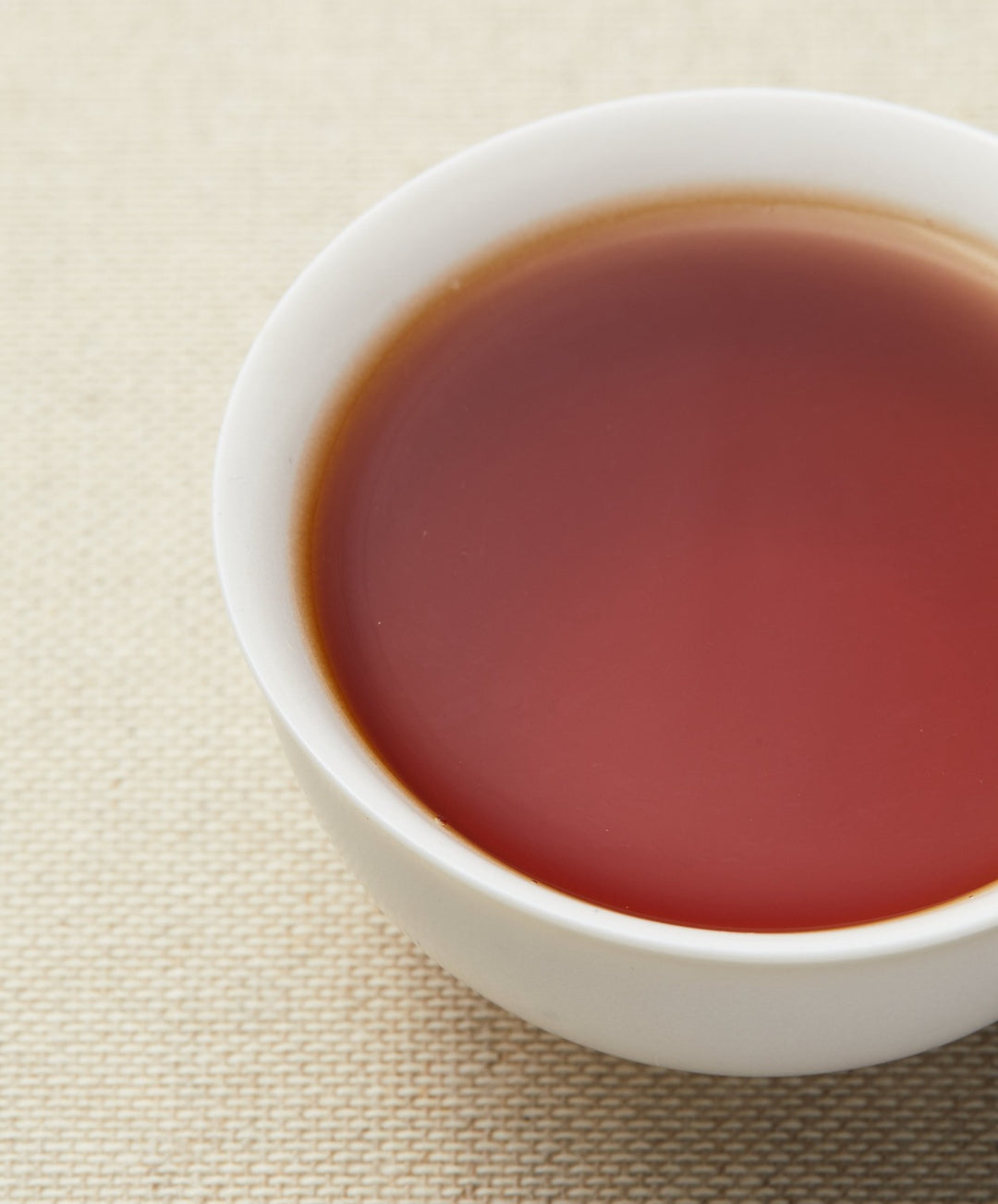
What is semi-oxidized tea?
Semi-oxidized tea means that the tea is somewhere in between no oxidation and full oxidation.
Much like an apple turning brown after being sliced open, tea oxidizes when it's picked. When most organic matter comes into contact with air, its molecular composition alters.
Oxidation happens when harvested tea leaves are exposed to oxygen, and the chemical reaction causes the browning of tea leaves or the start of decay. The oxidation levels in tea create different flavors and aromas, which create the different types of tea we drink daily.
Factors that induce oxidation are oxygen, heat, light, and moisture. The greater the exposure to these four elements, the quicker the oxidation occurs. Since the leaves begin to oxidize as soon as they are plucked, it's necessary to quickly exercise control over the oxidation process. The oxidation process can be stopped at any point by subjecting the tea leaves to high heat.

What is oolong tea made of?
The origin of oolong tea comes from the plant Camellia Sinensis. Like different apple varieties, there are also multiple cultivars within the Camellia Sinensis plant.
The two major varieties are Camellia sinensis var. assamica and Camellia sinensis var. sinensis.
- Var. Assamica: Larger and better suited for making black teas and pu-erh, more processed teas.
- Var Sinensis: Smaller in size and suitable for making green tea or greener oolongs, though they can be made into all genres of teas except for pu-erh.
Like wine, the different styles of teas are distinguished by multiple variables: plant variety, growing condition (terroir), and processing methods that have been defined by culture and heritage.

Origin of the word oolong
Every tea has a heritage that can be traced back to ancient China, including oolong.
There are a few widely accepted theories regarding the etymology of the word oolong. One of which says the word comes from the Chinese term wūlóng (烏龍). "wū" means black and "lóng" means dragon. When oolong teas were first made into loose-leaf form instead of its predecessor as pressed tea cakes, the tea leaves were dark, long and curly, which looks like a black dragon and therefore its name.
Classic Taiwanese oolong teas
The majority of Taiwanese teas are bought and consumed by Taiwanese people. 80% of its production is consumed domestically and only 20% leave the island country. In Taiwan, Oolong tea as a genre represents more than 90% in both production and consumption. Within the tea industry, Taiwan is often described as the darling tea region that produces the best oolong teas in the world. This is a brief list of the most popular Taiwanese teas.
- Pouchong: also known as Baozhong, it’s a delicate and floral oolong with twisted shaped leaves and light green color. It is the closest to a green tea that an oolong can get. It's floral notes also makes it comparable to a Jasmine green tea.
- High mountain oolong, most notably from Alishan and Lishan: Characterized by its rolled leaves, it’s typically grown in mountains that are 1,000 meters above sea elevation. High mountain tea is known for it’s sweet and buttery notes.
- Dong Ding: It’s a tightly rolled leaf tea that is midway oxidized and roasted. Dong Ding means frozen summit or ice peak.
- Dong Fang Mei Ren: Oriental beauty or bao hao oolong, this tea can be identified by its unique multi-color leaves. It has a sweet taste due to being bitten by a tea jassid.
- Iron Goddess: the Iron Goddess from Taiwan is characterized by its deep roasted aroma vs. its grassier greener counterpart from Anxi Fujian.



Oolong tea processing steps
Oolong tea making is a culmination of successfully executing to a series of steps, which allows for its unique aroma and taste.
- Plucking and Withering: Only tea buds are harvested for quality teas. High elevation tea gardens typically are harvest by hand due to the steep terrain. The freshly picked tea buds are spread out under the sun to kick off the oxidation process while the moisture on the leaves starts to evaporate.
- Bruising: Gently tossing leaves to bruise the leaf edges to create more contacting surface which encourages oxidation.
- Maceration or Oxidation: The leaves are brought indoors to a temperature-controlled environment. While spread out, this time indoors, the leaves are oxidized, developing flavor, until the desired levels are reached.
- Fixing: Heat is applied in order to halt the enzymatic oxidation activities. In other words, stop the oxidation process.
- Rolling: The heated teas are rolled in small batches, by machine or by hand, to break the leaves fibrous structure. This way the tea juices can be released and stick to the leaf surface The leaves are shaped according to the tea style selected by the tea maker.
- Drying / Roasting: The drying process is applied to stabilize any remaining oxidation and to remove excess moisture. Further drying the leaves encourages shelf stability. The roasting step can be repeated with different temperatures to produce unique flavors.
- Sifting / Grading: Dried teas are hand sifted, in order to weave out any undesirable elements such as large stems or unsuccessfully processed tea leaves.
- Packaging: The final process of tea is to ensure well packed. Vacuum sealed tea is the preferred method of packaging.
A note on Roasting, also referred to as firing or baking
At the end of every harvest season, tea makers will make a decision on whether if they will be roasting that year's harvest. Roasting happens at the very end of the tea processing steps, where processed tea leaves are roasted via charcoal or electric oven for additional depth and aroma.
Higher roasting temperature or longer roasting time adds notes of honeyed stone fruit and accents of smoky caramel.
The roasting temperature typically varies depending on the style of teas, a key step that distinguishes the quality of the finished product.


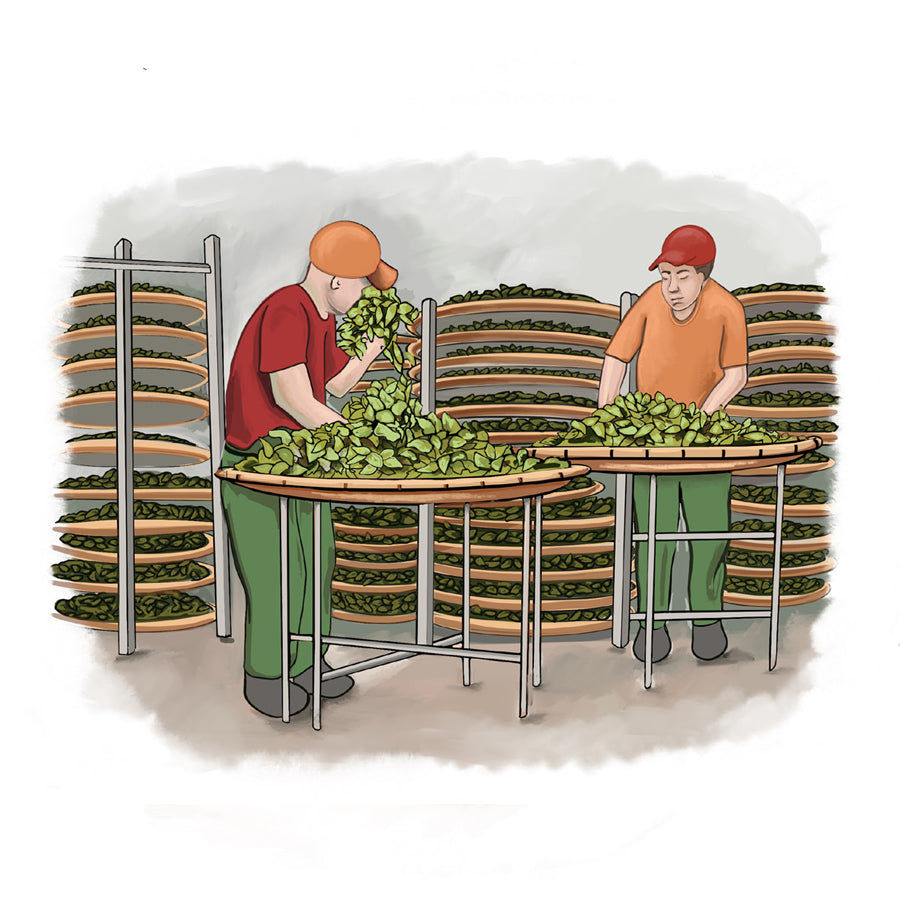




Brewing Oolong Tea
Since oolong tea has a variety of shapes, the brewing instructions will vary. Please refer to individual tea pages for suggested brewing temperature and steeping time by tea. One thing is important, oolong teas can be brewed multiple times using the same leaves. The flavor will improve with multiple steepings. We recommend steeping it 3-5 times. You don't need special tools to brew oolong tea.
Visit our tea brewing guides to explore different brewing methods.
Oolong Tea FAQs
Does oolong tea have caffeine?
Yes. Oolong tea contains caffeine because it is made from the leaves of the Camellia sinensis plant, which is also used to produce black, green, and white teas.
These plant parts naturally contain caffeine. The caffeine content in Oolong tea can vary depending on several factors, such as the specific part of the plant used, with younger leaves and buds typically having more caffeine. The caffeine content in Oolong tea can range broadly from one tea to another.
Health Benefits of oolong tea
Drinking oolong tea may help lower cholesterol levels, boost metabolism, and assist with bone mineral density.
More specific information on the Health Benefits of oolong tea can be found here.
